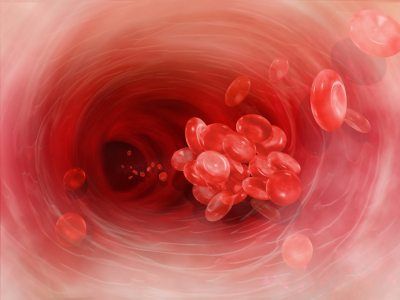The Wound Microenvironment
The wound microenvironment is populated with a variety of cells and chemicals that assist in wound healing. Understanding what these substances do and how they contribute to healing is important to gaining an advanced understanding of wound healing and management. Let’s look at these cells and chemicals in greater detail.
Cells – Wound Microenvironment
Cells can be divided between those that are active during the inflammatory phase and those that are active during the proliferative phase.
Cells that are active during the inflammatory phase include:
- PMNs- secrete MMPs (proteases produced by cells such as neutrophils and macrophages during wound healing) and inflammatory mediators; PMNs are a type of white blood cell and are the first cells that appear following an injury. PMNs are scavengers capable of destroying bacteria, therefore they help in cleaning the wound
- Platelets- secrete chemotactic agents and growth factors, in addition to forming platelet ‘plugs’ that assist in controlling active bleeding
- Macrophages- secrete MMPs and growth factors; they direct the process of repair and assist PMNs in killing bacteria and cleaning the wound
- Mast cells- secrete mediators of inflammation; also secrete enzymes
Cells that are active during the proliferative phase include:
- Angioblasts- responsible for the formation of new blood vessels
- Fibroblasts- responsible for the building of granulation tissue
- Myofibroblasts- responsible for contraction of the wound edges
- Keratinocytes- responsible for the reepithelialisation of the wound surface
Now that we have reviewed the cells that are active during wound healing, let’s take a look at the chemical substances that play an important role in wound healing.
Wound Microenvironment Growth Factors
Growth factors are substances that are similar to hormones and are endogenously produced. They control cell metabolism, cell growth and cellular differentiation. Growth factors include the following substances:
- Fibroblast growth factor (FGF)- which stimulate the growth of all cells, as well as epithelialization and angiogenesis
- Platelet-derived growth factor (PDGF) – PDGF stimulates matrix production and angiogenesis, and also stimulates the proliferation of fibroblasts, angioblasts and keratinocytes. PDGF also attracts PMNs and macrophages. Platelet-derived growth factor is the first growth factor approved in Canada and the United States for use on wounds
- Keratinocyte growth factor (KGF)- as the name suggests, KGF stimulates the proliferation of keratinocytes
- Epidermal growth factor (EGF) – EGF attracts keratinocytes and fibroblasts to the site of injury. In addition, EGF stimulates fibroblast, angioblast and keratinocyte proliferation
- Transforming growth factor- β (TGF-β) – this growth factor performs several jobs. It reverses the negative wound healing effects of steroids, regulates collagen synthesis and matrix formation, stimulates epithelialization and angiogenesis, stimulates cell growth and aids in scar formation
- Insulin-like growth factor 1- this growth factor also helps to reverse the negative effects of steroids on wound healing
- Vascular endothelial growth factor (VEGF)- this growth factor assists in stimulating angiogenesis
Cytokines are signaling proteins that are active during the inflammatory phase. Broadly speaking, they are released by cells and affect the behavior of other cells. They include:
- Granulocyte-macrophage colony-stimulating factor (GM-CSF) – this cytokine stimulates angiogenesis, the proliferation and migration of keratinocytes and also enhances wound contraction. It acts as a chemotactic agent for various inflammatory mediators
- Tumor necrosis factor α (TNF-α)- this cytokine activates neutrophils and stimulates angiogenesis, fibroblast formation and inflammatory mediators
- Interleukin-1 (IL-1)- this substance is responsible for attracting inflammatory mediators and also for stimulating fibroblasts, epithelial cells, collagen synthesis and angiogenesis
As you can see, the interaction of cells and chemical substances secreted by various cells during the wound healing process is very complicated. These cells and substances interact in complex fashion to speed wound healing. Understanding how these substances interact helps us to understand when wound healing is delayed, and also helps us in choosing specific wound products. If you would like to learn more about the phases of wound healing and wound management, visit Wound Educators to learn how you can become a certified wound care specialist.
Sources:
Myers, Betsy. (2008). Wound Management: Principles and Practice. 2nd Edition. Pearson Prentice Hall, Upper Saddle River, New Jersey. pg. 12-16
Wound Healing and Growth Factors. Medscape. Updated December 2013. http://emedicine.medscape.com/article/1298196-overview#aw2aab6b4
Rozenfeld, H. (n.d.) A Clinical Review of Wound Healing. http://www.dentistryiq.com/articles/2012/06/a-clinical-review-of-wound-healing.html

